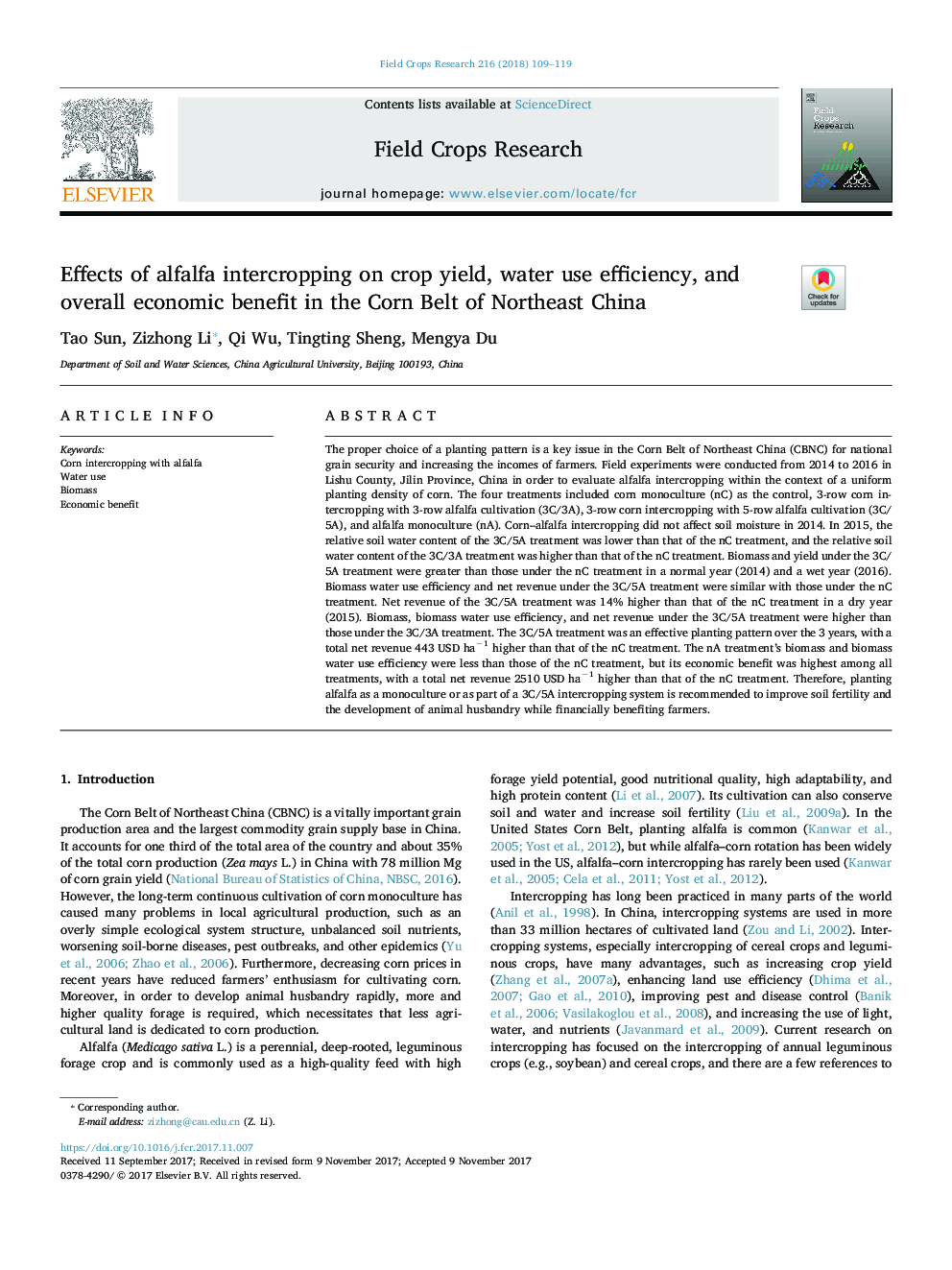| کد مقاله | کد نشریه | سال انتشار | مقاله انگلیسی | نسخه تمام متن |
|---|---|---|---|---|
| 8879429 | 1624647 | 2018 | 11 صفحه PDF | دانلود رایگان |
عنوان انگلیسی مقاله ISI
Effects of alfalfa intercropping on crop yield, water use efficiency, and overall economic benefit in the Corn Belt of Northeast China
ترجمه فارسی عنوان
اثرات کشت مخلوط یونجه بر عملکرد محصول، بهره وری مصرف آب و سود اقتصادی کلی در کمربند ذرت چین شمال
دانلود مقاله + سفارش ترجمه
دانلود مقاله ISI انگلیسی
رایگان برای ایرانیان
کلمات کلیدی
کشت مخلوط ذرت با یونجه، استفاده از آب، زیست توده، مزایای اقتصادی،
موضوعات مرتبط
علوم زیستی و بیوفناوری
علوم کشاورزی و بیولوژیک
علوم زراعت و اصلاح نباتات
چکیده انگلیسی
The proper choice of a planting pattern is a key issue in the Corn Belt of Northeast China (CBNC) for national grain security and increasing the incomes of farmers. Field experiments were conducted from 2014 to 2016 in Lishu County, Jilin Province, China in order to evaluate alfalfa intercropping within the context of a uniform planting density of corn. The four treatments included corn monoculture (nC) as the control, 3-row corn intercropping with 3-row alfalfa cultivation (3C/3A), 3-row corn intercropping with 5-row alfalfa cultivation (3C/5A), and alfalfa monoculture (nA). Corn-alfalfa intercropping did not affect soil moisture in 2014. In 2015, the relative soil water content of the 3C/5A treatment was lower than that of the nC treatment, and the relative soil water content of the 3C/3A treatment was higher than that of the nC treatment. Biomass and yield under the 3C/5A treatment were greater than those under the nC treatment in a normal year (2014) and a wet year (2016). Biomass water use efficiency and net revenue under the 3C/5A treatment were similar with those under the nC treatment. Net revenue of the 3C/5A treatment was 14% higher than that of the nC treatment in a dry year (2015). Biomass, biomass water use efficiency, and net revenue under the 3C/5A treatment were higher than those under the 3C/3A treatment. The 3C/5A treatment was an effective planting pattern over the 3 years, with a total net revenue 443 USD haâ1 higher than that of the nC treatment. The nA treatment's biomass and biomass water use efficiency were less than those of the nC treatment, but its economic benefit was highest among all treatments, with a total net revenue 2510Â USDÂ haâ1 higher than that of the nC treatment. Therefore, planting alfalfa as a monoculture or as part of a 3C/5A intercropping system is recommended to improve soil fertility and the development of animal husbandry while financially benefiting farmers.
ناشر
Database: Elsevier - ScienceDirect (ساینس دایرکت)
Journal: Field Crops Research - Volume 216, February 2018, Pages 109-119
Journal: Field Crops Research - Volume 216, February 2018, Pages 109-119
نویسندگان
Tao Sun, Zizhong Li, Qi Wu, Tingting Sheng, Mengya Du,
